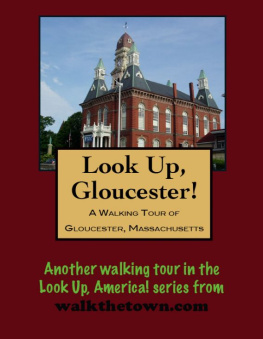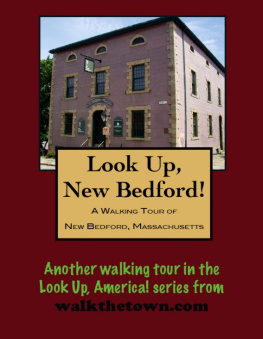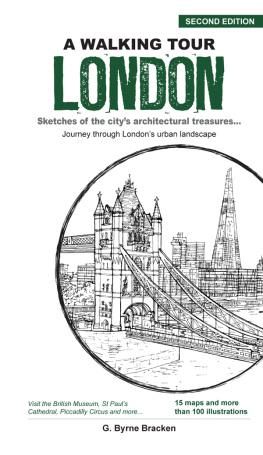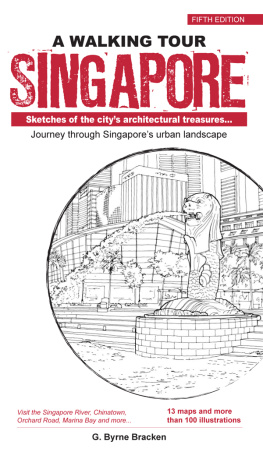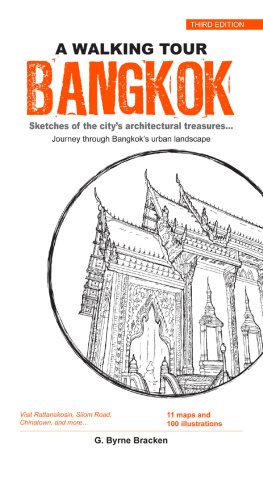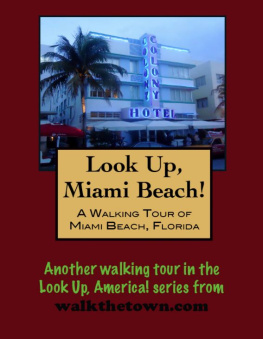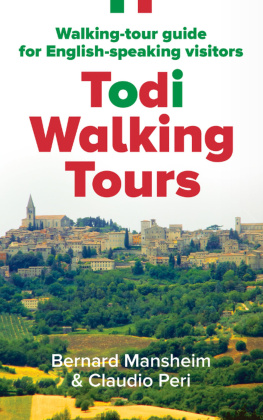A Walking Tour ofGloucester, Massachusetts
a walking tour in the Look Up, Americaseries from walkthetown.com
by Doug Gelbert
published by Cruden Bay Books atSmashwords
Copyright 2010 by DougGelbert
All rights reserved. No part of thisbook may be reproduced or transmitted in any form or by any means,electronic or mechanical, including photocopying, recording or byany information storage and retrieval system without permission inwriting from the Publisher.
Gloucesters deep water harborattracted a group of Englishmen from the Dorchester Company, wholanded here in 1623 to fish and to establish a settlement. Thisfirst company of pioneers made landing at Half Moon Beach, andsettled nearby, setting up fishing stages in a field in what is nowStage Fort Park. This settlements existence is proclaimed today bya memorial tablet, affixed to a 50 boulder in thatpark.
This settlement allows Gloucester toboast the first settlement in what would become the MassachusettsBay Company, as this towns first settlement predates both Salem in1626 and Boston in 1630. Life in this first settlement was harshand it was short-lived. Around 1626 the place was abandoned, andthe people removed themselves to Naumkeag (what is now calledSalem) , where more fertile soil for planting was to be found. Themeetinghouse was even disassembled and relocated to the new placeof settlement. At some point in the following years - though norecord exists - the area was slowly resettled. The town wasformally incorporated in 1642. It is at this time that the nameGloucester first appears on tax rolls, although in variousspellings. The town took its name from the great Cathedral City inSouth-West England, where it is assumed many of its new occupantsoriginated.
This new permanent settlement focusedon the Town Green area, an inlet in the marshes at a bend in theAnnisquam River. This area is now the site of Grant Circle, a largetraffic-rotary at which MA 128 mingles with a major city street(Washington Street/MA 127. Here the first permanent settlers builta meeting house and therefore focused the nexus of their settlementon the Island for nearly 100 years. Unlike other early coastaltowns in New England, development in Gloucester was not focusedaround the harbor as it is today, rather it was inland that peoplesettled first. This is evidenced by the placement of the Town Greennearly two miles from the harbor-front.
The town was an important shipbuildingcenter, and the first schooner was reputedly built there in 1713.Gloucester thus became the countrys first fishing port. By thelate 19th century, Gloucester was a record-setting port forfisheries under sail. Gloucesters most famous (and nationallyrecognized) seafood business was founded in 1849 -- John Pew &Sons. It became Gorton-Pew Fisheries in 1906, and in 1957 changedits name to Gortons of Gloucester. The iconic image of theGortons Fisherman and the products he represents, are knownthroughout the country and beyond. Besides catching and processingseafood, Gloucester is also a center for fish research. The cityremained a fishing center as waves of immigrants primarily NovaScotian, Sicilian and Portuguese came to fish the waters off CapeAnn. Fishing remains an important part of the localeconomy.
This walking tour will start onGloucesters famous waterfront and work its way up thehillside...
1.
St. Peters Square
foot of WashingtonStreet
The Square is a town landing and thecentral site of the annual St. Peters Fiesta, celebrated everyJune since 1927 to honor the patron saint of fishermen.
WALK NORTH ON WASHINGTONSTREET.
2.
American Legion Hall
Washington Street and MiddleStreet
The first town hall was built in the1840s on Washington Street and is now the American LegionHall. It ceased to be the center of Gloucesters government in 1867and became the Forbes School. Saving it from demolition, theAmerican Legion took over the building in 1919.
3.
Joan of Arc statue
Washington Street and MiddleStreet
Anna Vaughn Hyatt Huntington was anunknown sculptor of animals before earning well-deserved andhard-won renown for her sculpture of Joan of Arc in New York CitysRiverside Park, which was dedicated in 1915. There are severalreplicas of her statue of Joan of Arc around the world, includingthis one in her hometown. The success of her Joan of Arc designpropelled Huntington to new heights, and she went on to become oneof Americas most prolific sculptors: she is credited with morethan 400 works in more than 200 museums and parks around theworld.
TURN RIGHT ON MIDDLE STREET.
4.
Parmenter House
46 Middle Street
Prosperous fish dealer Henry Parmenterpurchased this property in 1879. A two-story Federal house from1807 stood on the land at the time but Parmenter moved it to 12Proctor Street and erected this stylish Stick-Style Victorian home,although some of its detailed woodwork has beencompromised.
5.
St. Johns Episcopal Church
48 Middle Street
St. Johns Church with attached parishhouse stands today where it has always stood on Middle Street sincethe Episcopal Society held its first meeting in Magnolia Hall. Thechurch itself was designed by Alexander R Esty of Boston and wascompleted on September 20, 1864 and cost $4,150. The design of thebuilding includes vaulted ceilings with exposed beams, indicatingAnglican traditions coupled with simplicity of furnishings, andwhile plaster walls typical of the best of New England and itsPuritan roots. Part of the intrigue of this type of construction isthat the inside of the structure resembles that of an upside-downship and that the structural members make crosses in various formsand triangles which signify the Holy Trinity. The outside of thebuilding was originally Stick Style with some decorative shinglework. This was modified in the early 1900s to its present stuccofacade to better withstand the weather. The existing Parish Hallwas built in 1908 and has been modified and refurbished as theneeds of the parish have changed.
6.
The Sargent Murray Gilman Hough House
49 Middle Street
In the 1700s and 1800s the mansions ofthe Sargent family dominated the Main Street/Middle Street area ofGloucester. Only two remain. The portion of the current SargentHouse that is the library started this house in 1764, built byThomas Saunders. A fine example of high-style Georgian domesticarchitecture, the house was built in 1782 for Judith Sargent Murray(1751-1820), a philosopher, writer and an early advocate of womensequality. For over 100 years, the Sargent House Museum was the homeof sea merchants, patriots and community leaders.
Judith Sargent Murray is noted as oneof this countrys earliest feminist writers, a recognition shesecured with the 1790 publication of her essay On the Equality ofthe Sexes. Murray was also one of the first women in America tohave her own literary column and the first American to have a playproduced on the Boston stage. In addition to writing plays, essays,poems and fiction, Murray was an avid writer of letters. Between1774 and the early 1800s, she penned over 2,000 letters and kept acopy of each and every one. The front entrance is below on MainStreet where a semi-circular stone foundation supports aColonial-style fence and fronts a terraced yard.
7.
Unitarian Universalist Church
10 Church Street, northwestcorner of Middle Street and Church Street
The Independent Christian Church wasthe first Universalist Society in America, organized in 1770. Thepresent building dates to 1806 and is home to a bronze bell cast inPaul Reveres foundry. Elm trees were planted to frame theFederal-style church with Palladian window and neoclassicalfeatures. Ipswich-born housewright Jacob Smith designed thechurch.
TURN LEFT ON DALE AVENUE.
8.
Sawyer Free Library
2 Dale Avenue at MiddleStreet
On February 15, 1830 nearly 100Gloucester residents met and formed the Gloucester Lyceum. Thepurpose of the organization was to bring community members togetherto participate in lectures and debates which fostered ideas andinformation. Among the many intellectual luminaries who appearedwere Henry David Thoreau, Ralph Waldo Emerson, and Oliver WendellHolmes.
Next page
